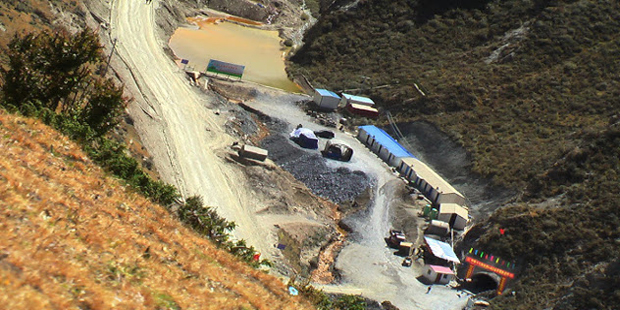The Government of the United States of America is loaning US $627 million (£417 million), along with a collective of banks led by the Bank of China, with the Agricultural Bank of China, China Construction Bank and Bank of Tibet, to expand the Gyama Copper Gold Polymetallic mine in Meldro Gungkar County in Tibet.
Once declared a model mine by the Chinese Government, 83 workers were killed there in a landslide in 2013. The Chinese government claims that the landslide was due to natural factors and not caused by the Gyama mine, but the Central Tibetan Administration’s Environment Desk has strong evidence to prove that the 2013 landslide was caused by mismanagement of the mine.
Tibetan communities around Gyama valley have been protesting about the mine for over five years as it has brought disruption to the traditional, indigenous nomadic lifestyle in the region, but these peaceful protests have always ended in a police crackdown. In 2005, local people complained about their cattle dying after drinking waste water released from the mine into community streams. The company investigators denied the link and many farmers did not get compensation.
The Gyama mine is in Medro Gungkar County in the Tibet Autonomous Region (TAR). It is currently owned and operated by the Tibet Huatailong Mining Development Company Limited, a subsidiary of China National Gold Group. It is a large scale polymetallic deposit consisting of copper, molybdenum, gold, silver, lead and zinc with the potential to become China’s biggest copper producer in ten years. The mining company is expected to get an average net cash flow of $120 million (£80 million) every year for the 31 years of LOM (Life of Mine). The mine is expected producean annual production of 176 million pounds of copper, 35 thousand ounces of gold, 2.7 million ounces of silver and 2.3 thousand tonnes of molybdenum.





 Print
Print Email
Email